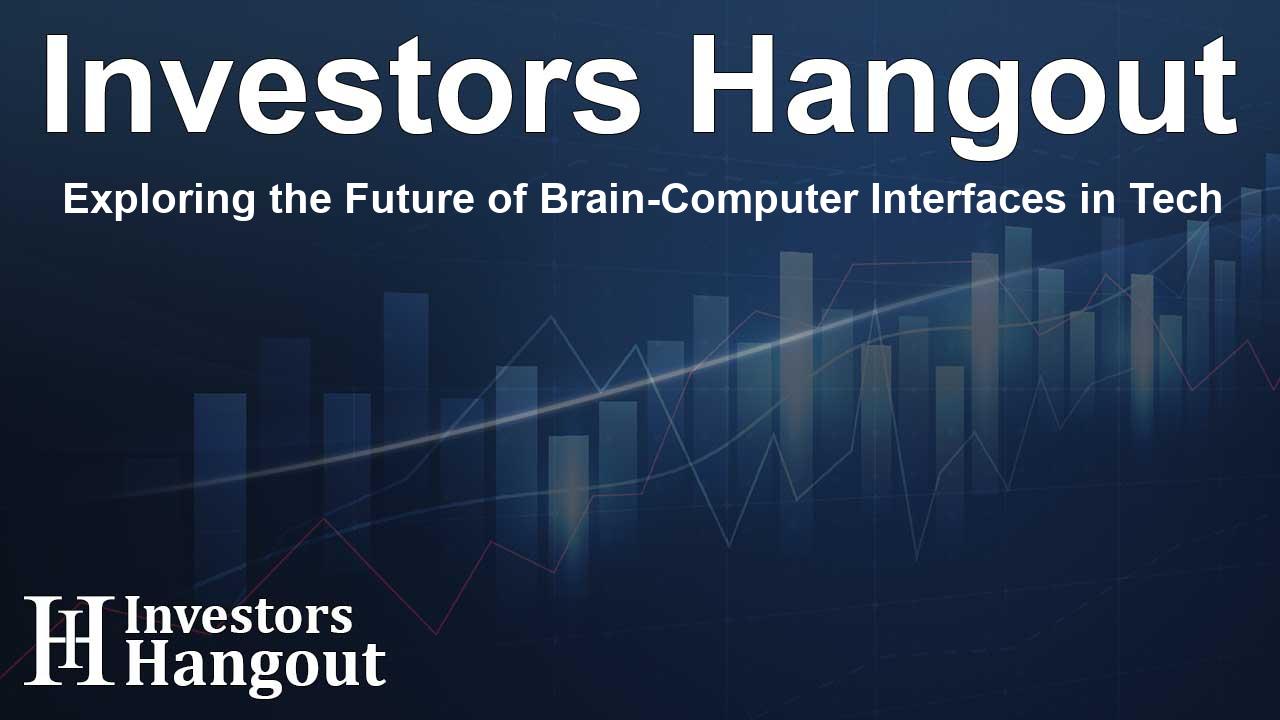Exploring the Future of Brain-Computer Interfaces in Tech

Understanding the Rapid Growth of the Brain-Computer Interface Market
The brain-computer interface (BCI) market is on a remarkable trajectory, evolving from initial experimental setups to sophisticated commercial applications. This evolution is fueled by the integration of advanced technologies, including AI, machine learning, and neural networks, which have significantly improved the usability and responsiveness of BCI devices. The market was valued at approximately US$ 2.84 billion and is projected to skyrocket to US$ 11.20 billion by 2033, with a compound annual growth rate (CAGR) of 16.43% expected during this period.
Technological Advancements Driving BCI Solutions
BCI technologies have witnessed incredible advancements recently. Invasive systems like Neuralink are currently undergoing human clinical trials, aiming to assist in treating neurological disorders. Meanwhile, non-invasive solutions such as EEG and fNIRS are gaining popularity due to their safety and user-friendliness. Companies like NextMind and Emotiv have pioneered affordable wearable devices, enhancing user experience in gaming and educational settings.
Key Trends Shaping BCI Innovations
Emerging trends such as the adoption of multimodal neuroimaging are transforming how we interpret neural activities. By integrating various techniques like EEG, fNIRS, and MEG, we can gain real-time insights into the brain’s functioning. Meanwhile, AI and machine learning are enhancing the accuracy of signal processing, ensuring that BCIs cater to a broader user base with varied needs.
Market Insights and Growth Potential
The BCI market is heavily influenced by several factors, including increased investment and innovation in neurotechnology. In 2024, global venture capital funding exceeded US$ 1.2 billion, indicating robust confidence in this domain. Major partnerships between BCI firms and tech giants like Meta and Microsoft illustrate the immense potential for embedding neurotechnology into daily applications, such as remote work tools and virtual reality environments.
Challenges Facing the BCI Industry
Despite the promising outlook, the BCI market does face challenges. High costs associated with developing these devices can restrict access in developing regions. Additionally, the complexities surrounding regulatory approvals can delay the introduction of innovative products, while ethical considerations regarding user data privacy continue to raise concerns among potential users.
Regional Trends in BCI Adoption
North America remains a leader in the BCI market, primarily driven by substantial investments and favorable regulations. The initiatives from organizations such as DARPA and NIH contribute significantly to the local industry's growth. Europe follows suit, with countries like Germany and the UK making strides in medical-grade BCI applications, while the Asia-Pacific region is surging forward with investments and development in consumer-oriented BCI technologies.
Investment Opportunities within the BCI Sector
Investors are increasingly recognizing the numerous opportunities within the BCI market, particularly in healthcare and consumer applications. Companies like Neuralink and Synchron are making stellar progress in neurorehabilitation, while consumer products, particularly in gaming and wellness, are gaining popularity rapidly. Tools that enhance cognitive functions, relaxation, and education through brainwave-driven technology are increasingly appealing to both consumers and investors.
Competitive Landscape Analysis
The global BCI market is characterized by a mix of established players and innovative newcomers. Leaders like Neuralink and Emotiv are pioneering advancements in both invasive and non-invasive devices. Meanwhile, startups such as Kernel and NextMind, recently acquired by Snap Inc., are driving innovation and expanding the consumer market for neurotechnology solutions.
Frequently Asked Questions
What is the current valuation of the brain-computer interface market?
The brain-computer interface market is valued at approximately US$ 2.84 billion and is expected to reach about US$ 11.20 billion by 2033.
Which technologies are being integrated into BCI solutions?
BCI solutions are increasingly incorporating artificial intelligence, machine learning, and various neuroimaging techniques like EEG and fNIRS for enhanced performance.
What are some of the main challenges faced by the BCI market?
Challenges include high device costs, complex regulatory approvals, and ethical concerns related to data privacy that may hinder market accessibility.
How is the North American market performing in the BCI sector?
North America continues to dominate the BCI market due to significant investments, regulatory support, and a strong foundation in research and development.
What segments offer the most investment potential in BCI?
Investment opportunities are particularly attractive in healthcare and consumer applications, addressing areas like neurorehabilitation and interactive gaming solutions.
About The Author
Contact Olivia Taylor privately here. Or send an email with ATTN: Olivia Taylor as the subject to contact@investorshangout.com.
About Investors Hangout
Investors Hangout is a leading online stock forum for financial discussion and learning, offering a wide range of free tools and resources. It draws in traders of all levels, who exchange market knowledge, investigate trading tactics, and keep an eye on industry developments in real time. Featuring financial articles, stock message boards, quotes, charts, company profiles, and live news updates. Through cooperative learning and a wealth of informational resources, it helps users from novices creating their first portfolios to experts honing their techniques. Join Investors Hangout today: https://investorshangout.com/
The content of this article is based on factual, publicly available information and does not represent legal, financial, or investment advice. Investors Hangout does not offer financial advice, and the author is not a licensed financial advisor. Consult a qualified advisor before making any financial or investment decisions based on this article. This article should not be considered advice to purchase, sell, or hold any securities or other investments. If any of the material provided here is inaccurate, please contact us for corrections.
